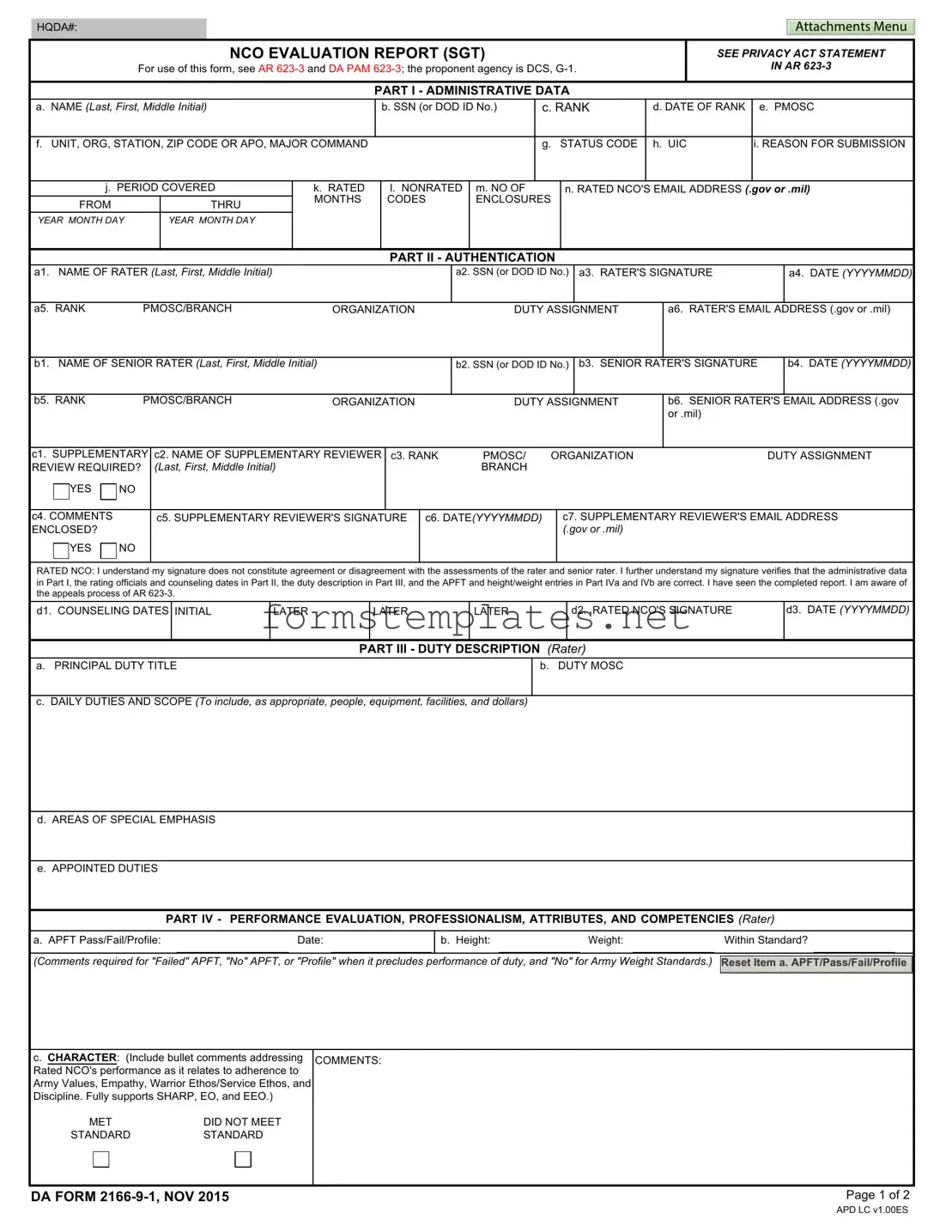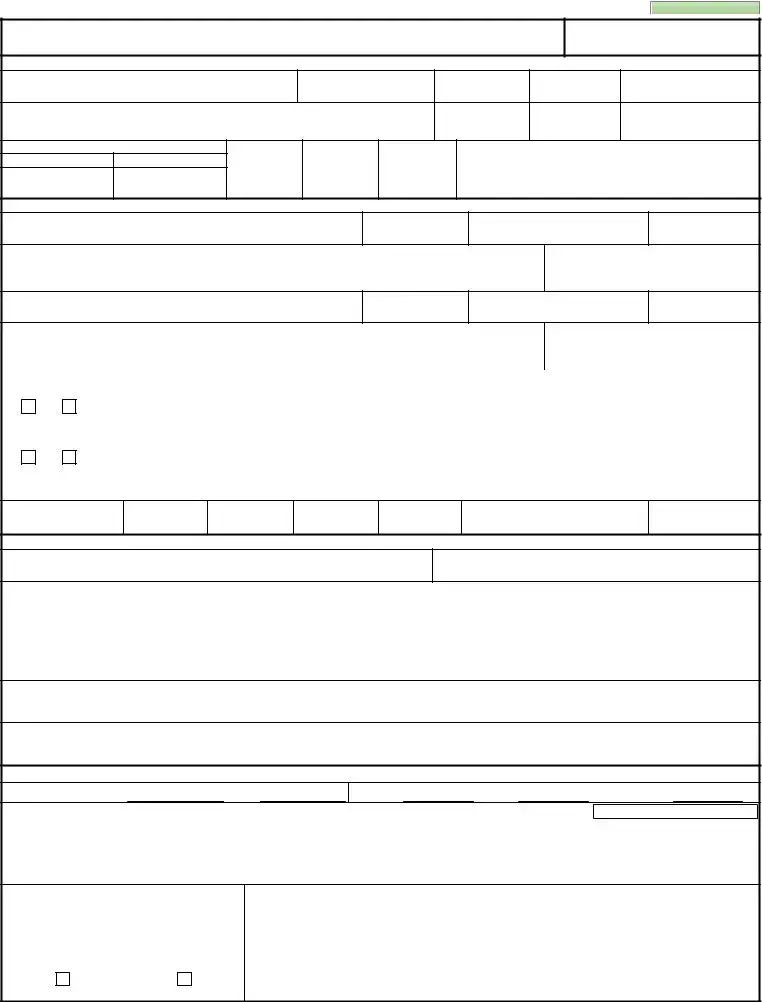The DA 2166 9 1 form serves as an NCO Evaluation Report specifically for Sergeants. It is designed to assess the performance and potential of non-commissioned officers within the Army. The evaluations recorded on this form are crucial for personnel decisions, including promotions, assignments, and professional development opportunities.
The form must be completed by the rater, who is typically the immediate supervisor of the NCO being evaluated. Additionally, a senior rater must also provide their assessment. In some cases, a supplementary reviewer may be involved to ensure a comprehensive evaluation process.
Part I includes essential administrative data about the rated NCO. This section requires the following information:
-
Name (Last, First, Middle Initial)
-
Social Security Number or DOD ID Number
-
Rank and Date of Rank
-
Primary Military Occupational Specialty Code (PMOSC)
-
Unit, Organization, Station, ZIP Code or APO, Major Command
-
Status Code and Unit Identification Code (UIC)
-
Reason for Submission
-
Period Covered by the Evaluation
-
Rated Months and Nonrated Codes
-
Number of Enclosures
-
Rated NCO's email address
What is the significance of the counseling dates in Part II?
Counseling dates are critical as they indicate when the rated NCO received feedback regarding their performance. Initial and subsequent counseling sessions help ensure that the NCO understands expectations and areas for improvement. These dates must be documented accurately to reflect the ongoing support and guidance provided to the NCO throughout the evaluation period.
Part IV focuses on evaluating various aspects of the NCO's performance. This section includes assessments of:
-
Character
-
Presence
-
Intellect
-
Leadership abilities
-
Development of others
-
Achievement of results
Each category is rated as either "Met Standard" or "Did Not Meet Standard," with space for comments to provide context and examples of performance.
What does the senior rater assess in Part V?
The senior rater evaluates the rated NCO's overall potential compared to peers in the same grade. They select one of four categories: Most Qualified, Highly Qualified, Qualified, or Not Qualified. Additionally, the senior rater must list two successive assignments and one broadening assignment, which helps to provide a more comprehensive view of the NCO's career trajectory and potential for future roles.
The rated NCO's signature does not indicate agreement or disagreement with the evaluations provided by the rater or senior rater. Instead, it confirms that the NCO has reviewed the administrative data, the duty description, and understands the appeals process outlined in AR 623-3. This acknowledgment is essential for maintaining transparency and accountability in the evaluation process.


